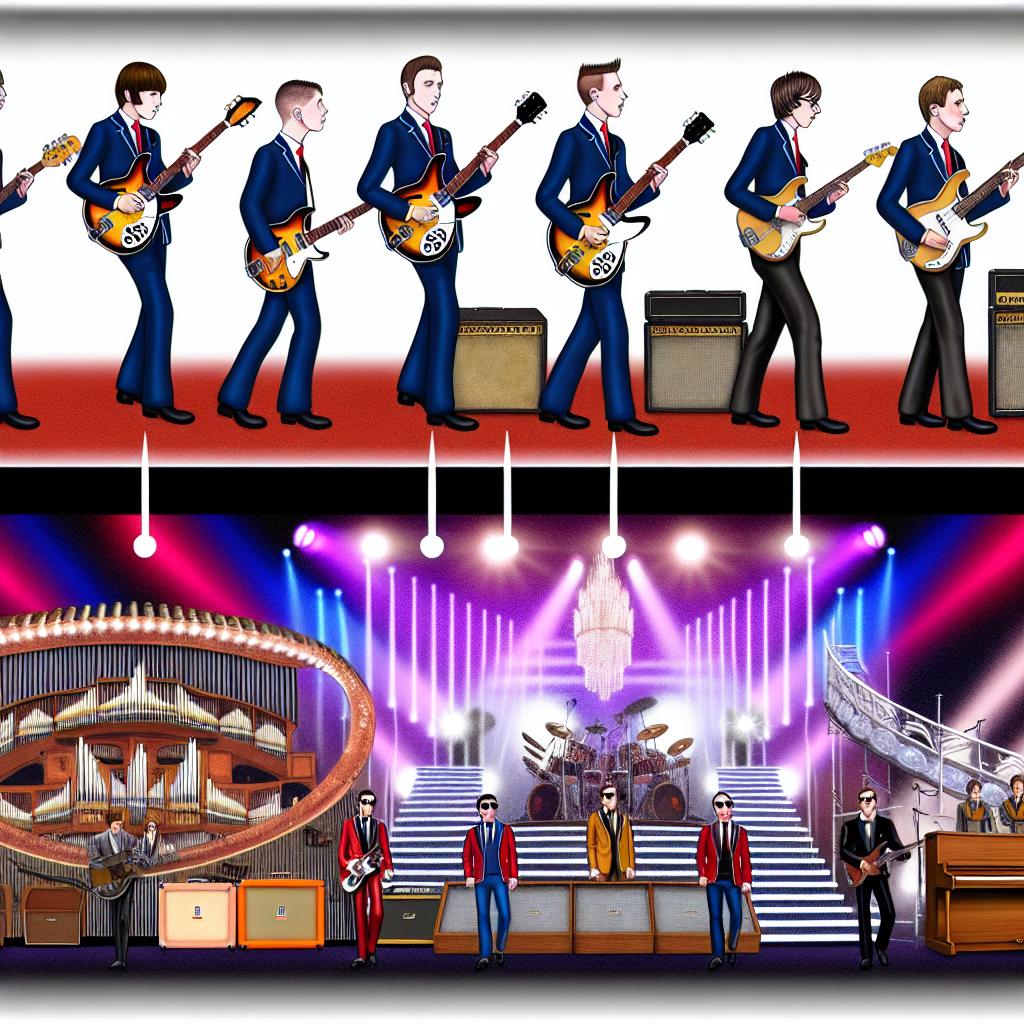Early Days: The Mod Influence
In 1964, against the backdrop of Britain’s vibrant cultural scene, The Who emerged as a musical force with profound ties to the Mod subculture. This era was one where aesthetics and musical tastes were intertwined, characterized by sharp fashion and a fervent appreciation for rhythm and blues. In these formative years, The Who’s sound was deeply intertwined with the Mod movement. Songs such as “I Can’t Explain” and “My Generation” exemplified this connection. The raw energy and youthful rebellion inherent in these tracks resonated with young audiences, fueled by powerful guitar riffs, driving bass lines, and dynamic drumming. This blend of music and cultural identity captured the essence of the Mod scene, establishing The Who as its undisputed musical trailblazers.
Transition to a Harder Rock Sound
As the 1960s wore on, The Who began to evolve, moving beyond their Mod roots to embrace a more robust and intricate rock sound. Influenced by the changing musical landscape and a desire to differentiate themselves from contemporaries, The Who’s sound became increasingly sophisticated. Albums like “A Quick One” and “The Who Sell Out” marked this transition. These records saw the band experimenting with diverse musical styles, longer compositions, and more ambitious song structures, laying the foundation for their future work and hinting at the potential for rock music to tell broader, more complex narratives.
Iconic Albums and Musical Innovations
The release of their rock opera “Tommy” in 1969 was a seminal moment in The Who’s career. Presented as a double album, “Tommy” was more than just a collection of songs; it was a cohesive narrative told through rock music, a groundbreaking concept at the time. This ambitious project showcased the band’s ability to weave intricate stories into their music, pushing the boundaries of what a rock album could achieve. The success of “Tommy” not only solidified The Who’s status as innovators but also paved the way for future concept albums in the rock genre.
Their creativity did not stop there. Albums like “Who’s Next” and “Quadrophenia” further cemented their reputation as trailblazers. These records featured a mix of powerful rock anthems such as “Baba O’Riley” and “Won’t Get Fooled Again,” along with introspective and narrative-driven pieces, reinforcing their mastery of the rock opera form. This period of creativity and innovation showed that The Who were not just performers but artists capable of creating profound musical statements.
Members’ Contributions to The Sound
The Who’s distinctive sound was the product of its members’ individual talents, each bringing something unique to the music. Guitarist Pete Townshend, the band’s principal songwriter, played a significant role in shaping their complex arrangements and thematic albums. His innovative use of feedback and power chords became a hallmark of The Who’s sound. In parallel, bassist John Entwistle’s unique playing style added a melodic layer that was crucial to the band’s music. His approach to the bass was not just as a rhythm instrument but as a voice that enriched their soundscapes.
Keith Moon, on drums, delivered energetic and unpredictable performances that added a sense of chaos and excitement to their music. His style was both frenetic and precise, providing a rhythmic backbone that elevated their sound. Finally, Roger Daltrey’s powerful vocals unified the musical blend, delivering the band’s messages with emotional depth and authority. Each member’s contributions not only defined The Who’s sound but also highlighted their unparalleled chemistry and collective artistry.
Live Performances and Legacy
The Who’s explosive live performances became legendary, integral to their evolution as a band. Their concerts were renowned for their theatricality and energy, featuring iconic moments like Townshend’s windmill guitar strums and Moon’s dramatic drum destructions. These performances captivated audiences worldwide, elevating The Who from a Mod band to a legendary rock group. Their stage presence exemplified their dedication to performance art, transforming concerts into unforgettable experiences.
This commitment to live music was a significant aspect of their legacy. The energy and intensity of their performances showcased not just their musical prowess but their ability to connect with an audience on a visceral level. Their influence extended far beyond their music, impacting live performance conventions and setting new standards for what audiences could expect at rock concerts.
Conclusion
The Who’s musical journey from their Mod beginnings to the pioneers of rock opera demonstrates a remarkable evolution. Their adaptability and willingness to innovate have carved out a unique place for them in the annals of rock history, influencing countless musicians who came after them. Their legacy is not just in their recordings but also in the dynamic live performances that redefined what it meant to be a rock band. Their impact continues to be felt in the modern music landscape, offering inspiration to new generations who seek to push the boundaries of rock music. For those curious to delve deeper into The Who’s extensive career and enduring influence, numerous resources, including music sites, books, and documentaries, provide a rich exploration of a band that has undeniably helped shape the trajectory of rock music.
